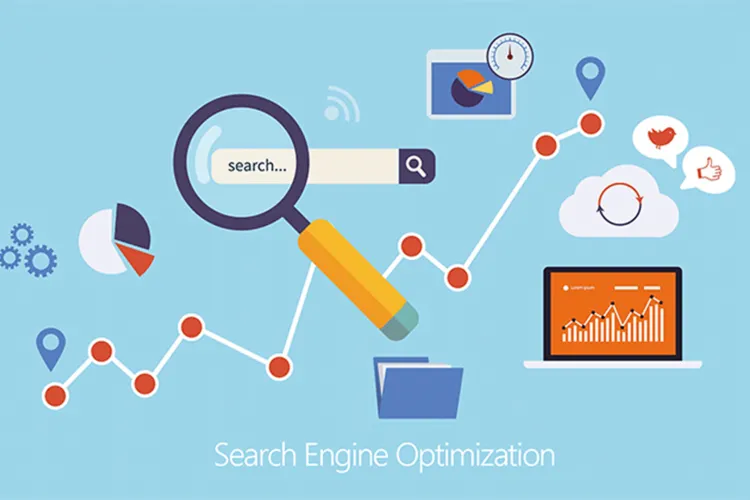
Table of Contents
ToggleBehavioral factors are a collection of data about how users behave online, including on your website. These metrics help search engines evaluate the quality of a resource and influence its ranking in search results.
How users search for information, click links, interact with pages, and return to search reveals how user-friendly, useful, and responsive a website is. Search engines, SEO specialists, and UX researchers collect, analyze, and use this data differently.
Search engines obtain information about user behavior through search statistics, analytics tools (e.g., Yandex.Metrica, Google Analytics), browser history, bookmarks, and installed extensions. They access this data based on the privacy policy that users agree to when using a browser or service.
Algorithms evaluate the queries that lead people to a website, how often they return, how deeply they browse pages, and whether they find the information they need. For example, if a person regularly visits the same news portal, the system infers that the resource is valuable to that user and can improve its rankings for relevant queries.
SEO specialists analyze traffic sources and visitor metrics to improve a website’s search visibility. Based on these statistics, they make decisions about optimizing content, structure, and meta tags. If, for example, page views are low, the SEO specialist looks for ways to engage users and direct them to other important sections.
UX experts, in turn, study user behavior on specific pages: where they click, where they get stuck, and at what stage they abandon a form or shopping cart. If a contact form is rarely filled out, this may indicate that it is poorly visible, too long, or inconvenient. Analyzing user behavior patterns helps simplify the interface and improve the user experience.
Types of behavioral factors
The full list of behavioral signals and their exact “weight” in search engine algorithms is classified and not publicly disclosed. Therefore, in practice, a set of metrics is used, based on general search engine recommendations, experiments, case studies, and the hypotheses of SEO and UX specialists.
The known behavioral indicators can be divided into two broad groups: external and internal.
External factors
External behavioral factors reflect user actions before visiting a specific page. This includes search engine behavior and other channels from which a person arrives at the site. These metrics show where the visitor came from, what they were searching for, and how quickly they found the answer.
The main external behavioral factors are:
Snippet Click-Through Rate (CTR)
CTR is the ratio of the number of clicks on a link in the search results to the number of impressions. Essentially, it’s an indicator of how attractive your snippet is among competitors for a specific query.
If users click your result more often than the market average, algorithms conclude that the page appears more relevant and useful. As a result, the site may rank higher in organic search results.
Referrals from social media, newsletters, and other external sources
When a site receives regular traffic from links in social media, email newsletters, instant messaging, blogs, or other online sources, search engines perceive the resource as vibrant and in-demand.
It’s not just the quantity but also the quality of these referrals that matters. If the traffic is massive but untargeted (quick bounces, zero engagement), the effect may be counterproductive—the algorithms will see that people aren’t finding what they expected on the site.
Return to Search
If a user clicks on your link in search, opens the page, and almost immediately returns to the results, the search engine may consider the content to be inconsistent with their expectations or search query.
The more often this scenario occurs, the higher the likelihood that the page will be demoted for related queries. This is a signal that you need to review your titles, content, or the relevance of the text to the search intent.
Direct Visits
Direct visits are when a user manually enters the website address, clicks a bookmark, or follows a saved link. This type of traffic typically comes from a loyal audience already familiar with the brand.
For search engines, this is an indicator of trust and recognition. The higher the proportion of direct visits, the more obvious it is that users consciously choose this website, meaning it is valuable and may be important to others.
Additional External Signals
Algorithms also consider other behavioral aspects: the share of search queries that result in a visit to your website, the dynamics of branded queries, the number of pages visited before and after landing on your site, etc. These parameters help search engines assess how well a resource fits into the information picture for a specific topic.

Internal factors
Internal behavioral factors describe how visitors behave on the website itself: how long they spend on pages, where they click, whether they return, and whether they interact with forms and buttons.
Key internal factors include:
Repeat visits
Repeat visits are the return of users who have visited the site before. If a person returns through search or another link, this indicates that the previous experience was useful or interesting.
The higher the proportion of such returns, the more grounds the search engine has for considering the site valuable to its audience.
Session duration
The time a user spends on a website is often perceived as an indicator of engagement. For news resources, educational projects, and blogs, the logic is simple: the longer a person reads the content, the more value they receive.
But in commercial niches, it’s important to consider the context. If you know that placing an order typically takes about four minutes, and most users spend significantly longer on the site without making a purchase, this could be a symptom of a problem: a complex process, an incomprehensible interface, or a lack of necessary information.
Pageview Depth
Pageview depth shows the average number of pages a user views during a single visit. A high pageview depth typically signals interest in the content: a user navigates between sections, reads additional materials, and explores the product range.
However, excessive pageview depth without conversions may indicate navigation difficulties. For example, a visitor browses an online store for a long time but doesn’t place an order because they can’t find the product they need or don’t understand how to complete the purchase.
Bounce Rate
A bounce is a session in which the user doesn’t perform any actions that are important for analytics. The specific definition depends on the system.
- Yandex often uses short time on page as a bounce criterion: if a user spends less than 15 seconds on a page and then closes the site, the visit is considered unsuccessful. If such scenarios are frequent, the page may drop in search results.
- Google defines bounces as sessions that only view one page, regardless of how long the user spends on it. Therefore, landing pages that rely on single-page interactions technically have a high bounce rate, but this isn’t always a negative sign.
It’s important to look at this metric in conjunction with your page’s goals and other metrics.
Page Actions
Clickmaps, scrolling, form interactions, and button clicks all help understand how effectively a page is performing.
Based on this data, marketers and UX specialists:
- Analyze the popularity of certain products or sections;
- Assess which banners attract attention and which are ignored;
- Identify areas where users most often drop out of the funnel.
This makes it possible to fine-tune the interface and content, improving conversion and the overall user experience.

How to improve website behavioral factors
To improve behavioral metrics, a website must be both user-friendly and understandable for search algorithms. This is typically the responsibility of SEO and UX specialists, but basic improvements can be implemented independently.
Below are the key areas of work.
Customize your search snippet
The more informative and appealing your snippet is, the higher the chance that a user will select your link.
Search engines allow you to create rich snippets:
- Quick links,
- ratings and reviews,
- product cards,
- FAQ sections,
- emojis and special characters (within reason).
By default, a snippet is generated automatically from the title and a fragment of text. But with correct microdata and a well-thought-out Title/Description, you can “hint” the algorithms on which data to display.
Don’t forget about the favicon: a recognizable icon next to the title helps visually distinguish your website in search results.
Speed up page loading
Visitors are rarely willing to wait longer than 2-3 seconds. If a site is slow, many close the tab before it loads. For Yandex, such visits often fall into the bounce rate category.
To speed up your site, you should:
- Optimize JavaScript and CSS, removing unnecessary scripts;
- Replace heavy PNG and JPG files with modern WebP or AVIF formats;
- Disable heavy animations and complex visual effects for mobile devices;
- Consider implementing AMP pages for faster mobile versions.
The faster a website responds, the more likely users are to stay and continue interacting.
Improve usability
A confusing structure, unintuitive buttons, and overloaded forms all lead to users getting confused and leaving without completing their desired action.
To assess interface usability, it’s helpful to use tools like Webvisor and heatmaps. They allow you to:
- See how the user navigates the page;
- Understand where they get stuck and what causes irritation;
- Detect clicks on inactive elements (for example, images perceived as buttons).
Possible solutions:
- Simplify the menu structure;
- Place accents and buttons more logically;
- Reduce the number of fields in forms;
- Make the path to an application or order shorter in clicks.
Additionally, you can add breadcrumbs so that the user understands where they are and can quickly navigate to the desired sections.
Expand interaction functionality
The more useful interactions available to the user, the higher their engagement and time spent on the site. But a balance between functionality and speed is important.
The following will help:
- Online application and feedback forms;
- Cost calculators;
- Customer review blocks;
- Online chat or technical support widget;
- Back to top buttons for long pages;
- Embedded videos and galleries;
- “Related materials” or “Read more” blocks.
For example, if a user previously read an article and left, the addition of a “Related Articles” block encourages them to browse other content, increasing their viewing depth.
If an interactive element significantly slows down loading times, it’s best to remove it or replace it with a lighter solution. Basic contact information—phone number, email address, and address—can be placed in the header and footer: this won’t slow down the page while still providing additional interaction options.
Publish useful and relevant content
Quality content is one of the key drivers of positive behavioral factors. Useful articles, instructions, and reviews:
- Increase the time users spend on the site;
- Motivate them to return for new content;
- Help build brand trust.
It’s important to avoid keyword stuffing. Texts should primarily address audience queries and questions, not simply satisfy formal SEO requirements. Modern search algorithms prioritize content written for people.
Interlinking also plays a role: internal links help users delve deeper into topics of interest and stay on the site longer.
Well-designed content marketing simultaneously improves behavioral metrics and drives sales: people share useful content, and you gain new visitors and potential customers.
Use social media and email marketing
Social media and email marketing are powerful tools for generating external traffic and repeat visits.
What you can do:
- Add repost buttons and links to company communities to your website;
- Regularly publish news and articles on social media with links to the website;
- Set up email newsletters with useful and personalized content;
- Send curated content, promotions, and announcements that are truly interesting to your audience.
The higher the quality of your newsletters and posts, the more likely it is that users will visit your site and return again.
Don’t over-inflate behavioral factors
Technically, behavioral metrics can be artificially inflated using bots and specialized services. These imitate the behavior of real people: search traffic, clicks, and page dwell.
However, this is a risky and costly practice. Modern search engines actively combat this type of inflated rankings and are adept at detecting it. As a result, a website may not only lose rankings but also be filtered or blocked.
For a legitimate online business that values its long-term reputation and domain, this approach makes no sense. It’s far more effective to invest in improving the product, content, and user experience — this naturally improves behavioral factors and yields sustainable results.





